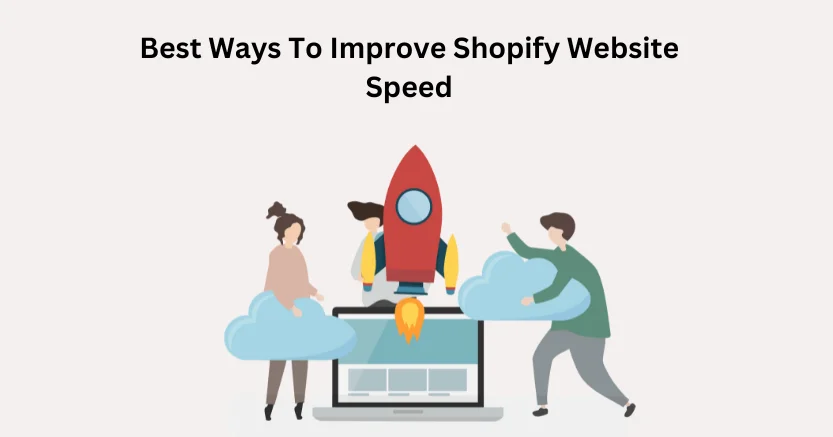Introduction
Running an online store requires providing an ultra-fast, smooth experience for shoppers because even just a few seconds of added wait can lead to frustrated visitors hitting the back button. When it comes to e-commerce websites, performance and speed are absolutely crucial for keeping people engaged, encouraging sales, and improving your search rankings. While Shopify is built to be highly optimized out-of-the-box, there are still plenty of tips and techniques savvy store owners can implement to get maximum speed from their storefronts.
From optimizing images and code, to leveraging smart technologies, to ongoing monitoring and iteration, here are 13 highly effective ways to Shopify speed optimization“.
Speed Up Your Shopify Store for Fast Results!
Boost Shopify Store NowTechniques To Try For Shopify Speed Optimization
Optimize Images
The big pictures and photos on your Shopify website can really slow things down if you are not careful. Go through each and every image for products, galleries, banners, etc., and use a special tool to shrink the file size to as tiny as possible while still maintaining decent visual quality. The smaller the image file size, the less data has to download, allowing those pages to load way faster. But also double-check that you set the correct dimensions for images so they don’t have to be resized, which creates delays.
Enable Compression
Compression is like squishing files into a tighter, more compact package before sending them out, sort of like squeezing a big cotton ball into a little ball. Enable GZIP compression, which automatically compresses all the files on your site down to a smaller size before shooting them over the internet. Since there’s less data to download, the content can get delivered much quicker to shoppers’ browsers. Additionally, core web vitals Shopify also plays an important role as they are the crucial metric to achieve faster loading times.
Minimize Code
The more coding, scripts, and programming stuff your website contains, the harder it is for web browsers to load and process it all. Minifying the code strips out all the extra blank spaces, comments, and other unnecessary characters to reduce file sizes. Look for Shopify apps or services that automatically minify or “shrink-wrap” all that coding across your entire website.
Leverage Browser Caching
Browser caching is like saving a copy of bigger files on someone’s own computer or device after they visit the first time. That way, when they come back later, their browser can quickly reload lots of stuff like images and coding scripts straight from their device’s local memory rather than having to keep re-downloading everything from your website servers. Caching is critical for Shopify’s performance optimization.
Use a Content Delivery Network (CDN)
Rather than hosting your whole Shopify site from just one single server location, a CDN is like having little mini-servers stationed all across the globe. When someone visits, it will automatically pull your site’s files from whichever little server node is closest to where they are located. This massively reduces the physical distance that data has to travel, so websites on CDNs feel way faster worldwide.
Optimize Apps & Integrations
Every extra app or tool you connect to your Shopify store site adds more coding weight and bulk that can weigh things down if you go overboard. Do a full audit, remove anything you are not really actively using, and scout out lighter, more performant options for any critical functionality you absolutely need to keep.
Use Accelerated Mobile Pages (AMP)
While not ideal for every single page, using AMP for sections like your Shopify blog and other content-heavy areas can be a big speed boost on mobile devices. AMP pages are specially coded to be a super basic, stripped-down, nearly-instant experience prioritized solely for loading quickly on phones and tablets.
Improve Server Response Times
While Shopify’s servers are highly optimized, sometimes outside factors like location proximity, internet traffic congestion, or the quality of web host can create bottlenecks slowing responsiveness. Use tools to monitor server response times, you want it consistently under 200ms. If needed, add more server resources or consider switching web hosting companies.
Use Shopify’s Built-In Performance Optimizations
Did you know Shopify has some built-in features to help speed things up and optimize right into their platform? Things like predictive DNS prefetching, caching headers, streamlined jQuery, and optimized images are all included if you just take a few minutes to enable those settings in your Shopify admin area. Shopify mobile speed optimization services from MakkPress Technologies not only speed up the site on mobile devices but help you to get better known to Shopify in build speed boosting features.
Limit Redirects and Broken Links
Having too many redirects, where visitors trying to access one URL gets bounced around to different locations before finally landing, creates unnecessary delay. Same with broken links that lead to nowhere. Streamline your URL structure, properly map any required redirects, and fix broken links to cut out wasted back-and-forth trips.

Want to read this blog offline?
No worries, download the PDF version
now and enjoy your reading later…
 Download
PDF
Download
PDF
Offload Expensive Code to Workers
For any really intensive, heavy-duty scripts or coding processes, you can actually offload those to run on a separate distributed “cloud worker” infrastructure like Cloudflare Workers. This shifts that maximum brainpower work off of your Shopify servers to be handled elsewhere, preventing it from bogging down your main site speed.
Implement Dynamic Rendering with Service Workers
Dynamic rendering pre-caches and stores an optimized startup version of your pages to serve blazing fast to very first-time visitors. Then once that near-instant static render loads, it seamlessly transitions to downloading and displaying the fully live version behind the scenes without disruption.
Monitor and Optimize Continually
You can never really stop optimizing for speed as technology evolves. Keep a close eye on performance reports across tools like Shopify’s built-in analyzers, Google PageSpeed Insights, GTMetrix, and others. Look for recurring slow patterns, pinpoint those bottlenecks, and keep chipping away at improvements over time to maintain consistently fast load times for your store.
Conclusion
Therefore, this blog explains the tricks for Shopify speed optimization. To better understand, use a Shopify speed boosting tool such as Website Speedy, a SaaS-based software that performs multiple tasks, including generating code, fixing render bocking issues, etc., and enhancing Shopify site loading speed.
With Website Speedy, you can see the site speed upgrade on your mobile devices as well.
May 31, 2024
Leave a Comment


































